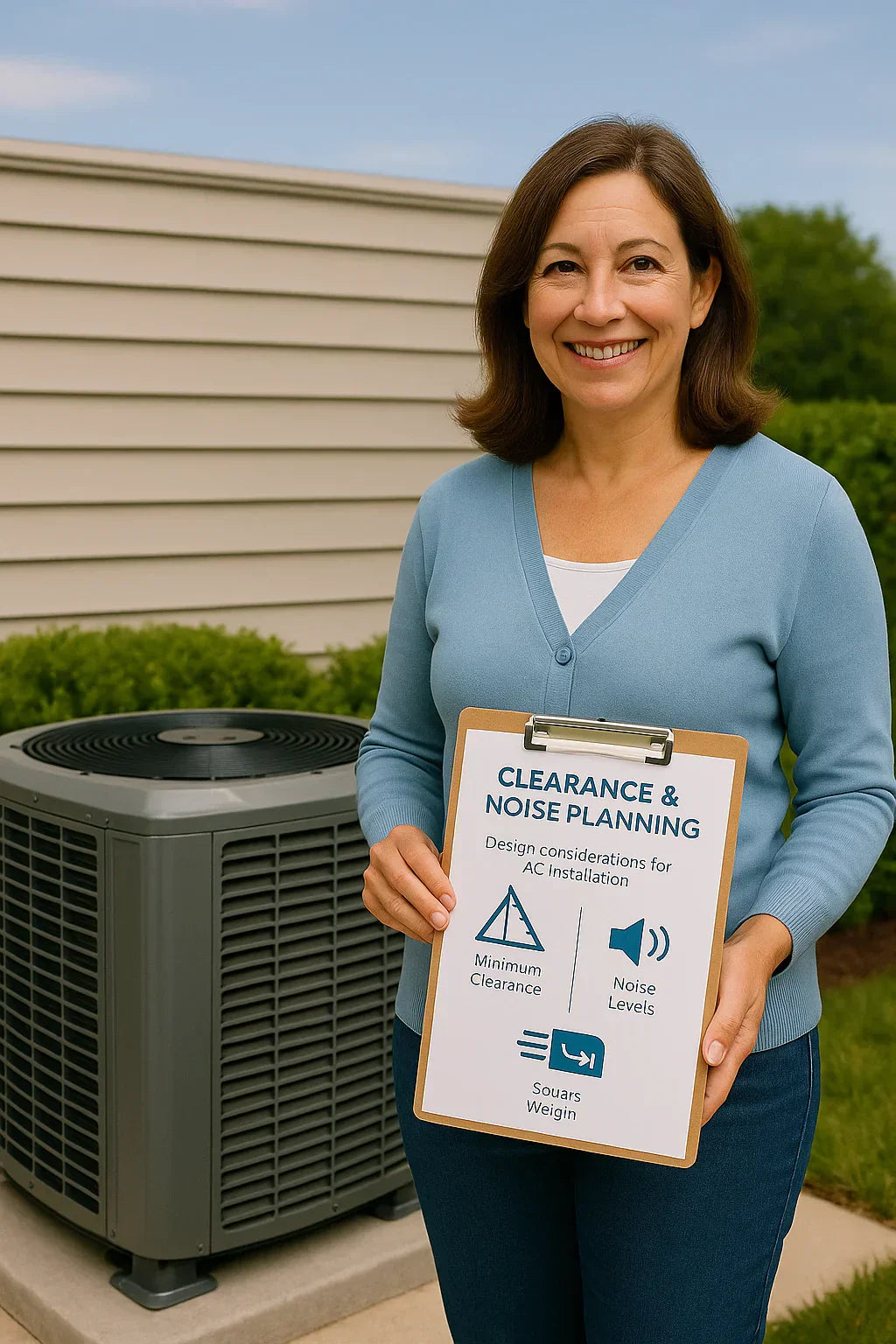🏡 Introduction: Don’t Buy Until You Know It Fits
Upgrading to a 4-ton R-32 air conditioning system brings high-capacity cooling, efficiency, and lower environmental impact. But here’s what many homeowners miss:
✅ Does it fit in your utility closet, garage, attic, or outdoor pad?
✅ Will it be too loud for your living spaces?
✅ Does your property meet clearance and code requirements?
This guide breaks down dimensions, clearances, noise considerations, design tips, and safety factors so you can confidently plan your R-32 AC installation.
📏 Typical Dimensions of 4-Ton R-32 Systems
While sizes vary by manufacturer, most 4-ton R-32 units share these general measurements:
🧊 Outdoor Condenser Unit:
-
Width: 35–40 inches
-
Depth: 35–40 inches
-
Height: 34–42 inches
-
Weight: 180–250 lbs
🌬️ Indoor Air Handler:
-
Width: 21–24 inches
-
Depth: 21–26 inches
-
Height: 48–60 inches
👉 Manufacturer spec examples:
🧱 Minimum Clearance Requirements
Proper clearances ensure:
✅ Safe airflow
✅ Easier maintenance
✅ Compliance with fire and building codes
Outdoor Unit Clearance:
-
24–36 inches on all sides (per most manufacturer guidelines)
-
60 inches clearance above (no overhangs or eaves)
-
Avoid corners that restrict airflow
Indoor Air Handler Clearance:
-
Minimum 6 inches on all sides for maintenance
-
Accessible filter panel and coil access
-
Check ceiling clearance in attic/closet installs
👉 Reference local codes and: ASHRAE Installation Standards
🛠️ Utility Closet vs. Garage vs. Attic Installations
🧰 Utility Closet:
-
Ensure adequate ventilation for air return
-
Must meet clearance and airflow needs
-
Leave room for filter changes
🚗 Garage:
-
Allows easier access
-
Keep units elevated to avoid flooding
-
Follow fire safety and refrigerant handling clearances
🛖 Attic:
-
Use drip pan and secondary drain
-
Ensure structural support
-
Confirm height clearance for coil and plenum access
🌬️ Planning Airflow: Intake and Exhaust Paths
Proper airflow ensures efficiency and prevents system strain.
✅ Ducts must match airflow needs (1,600–1,800 CFM for 4 tons)
✅ Avoid return or supply blockages
✅ Place outdoor units away from fences or shrubs
✅ Position return air vents away from kitchens and bathrooms to avoid humidity overload
👉 Resource: Energy.gov Duct Sizing
🔇 Noise Levels: Will It Be Too Loud?
4-ton systems have larger compressors and fans, but R-32 models often operate more quietly.
Typical Noise Ratings:
-
Outdoor unit: 68–75 dB (comparable to rainfall or conversation)
-
Indoor unit: 40–55 dB
Placement Tips:
✅ Avoid placing near bedroom windows
✅ Consider sound barriers (fencing or shrubbery)
✅ Look for inverter-driven models for quieter operation
👉 Carrier Sound Ratings Explained
🧯 R-32 Safety Spacing
R-32 is an A2L mildly flammable refrigerant, so:
✅ Never store flammable materials near equipment
✅ Maintain clear access for technicians
✅ Do not retrofit older units with R-32 — only install certified systems
All work must be performed by EPA 608-certified professionals trained in R-32 handling.
👉 EPA R-32 Refrigerant Safety Guidelines
🪨 Slab Requirements, Drainage, and Anchoring
Outdoor Condenser:
✅ Level concrete or composite pad (minimum 3 inches thick)
✅ Slight slope away from the home for water drainage
✅ Anchoring with hurricane tie-downs in storm-prone regions
Drainage:
-
Ensure clear condensate drain lines
-
Add secondary drain pans for attic installations
-
Regularly inspect for blockages
🛑 Common Mistakes That Lead to Problems
⚠️ Installing in cramped utility closets without ventilation
⚠️ Placing the outdoor unit under eaves or decks
⚠️ Blocking airflow with fencing or landscaping
⚠️ Ignoring slab leveling
⚠️ Skipping required clearances for maintenance
⚠️ Assuming “if it fits, it’s fine” — it’s not
📝 Samantha’s Space Planning Tips
✅ Measure twice: Use a tape measure and compare with spec sheets before purchase
✅ Check your breaker panel location: Your AC installer will need access
✅ Plan for filter changes: Don’t wedge the air handler into a dead corner
✅ Consider future maintenance: Ensure a tech can remove panels easily
✅ Think about noise: Place units away from bedrooms when possible
📋 Free Download: Pre-Install Measurement Worksheet
Take the guesswork out of your planning:
-
Record outdoor pad dimensions
-
Check ceiling height in install area
-
Confirm clearance on all sides
-
Note proximity to windows/bedrooms
-
List current breaker capacity
🔚 Final Takeaway: Plan Before You Buy
A 4-ton R-32 AC system offers serious cooling power, but it only pays off if it’s installed in a space that supports it.
✅ Key Steps:
-
Review manufacturer dimensions
-
Check clearance and code requirements
-
Consider airflow and noise
-
Plan drainage and slab needs
-
Involve a certified HVAC pro early
In the next topic we will know more about: Can a 4-Ton R-32 AC Handle Zoned Cooling? What You Need for Multi-Area Comfort







